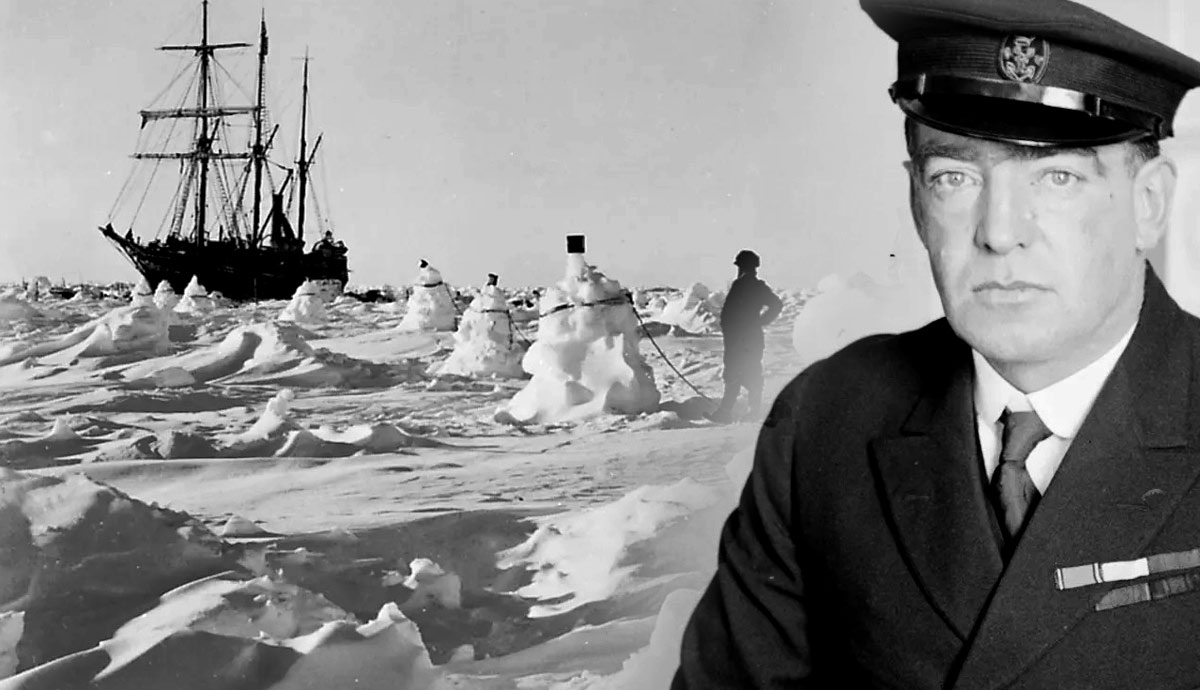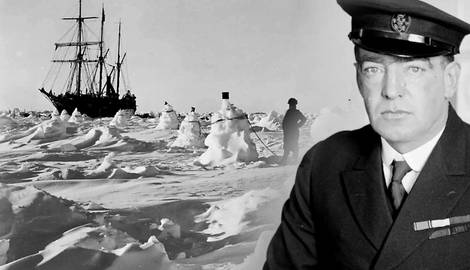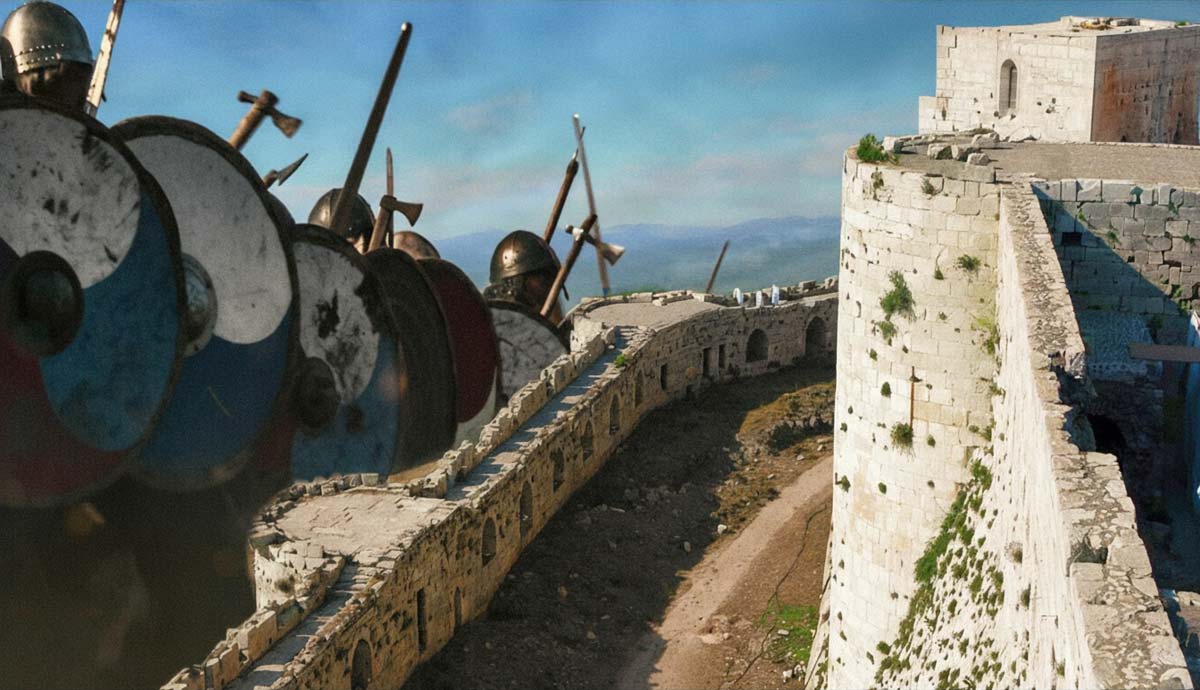
It is quite a coincidence that the name of Antarctic explorer Ernest Shackleton’s most famous ship is the Endurance. The voyage of the Endurance would become the expedition that he would be most remembered for, and the ship’s name would echo the perseverance of not only Shackleton, but his crew, as they struggled to stay alive after their ship was rendered useless and then destroyed. Their journey became a battle of wills against the elements as they wrestled the odds that were stacked against them.
Ernest Shackleton: A Man of the Sea

Seemingly destined to spend his life on a boat, Ernest Shackleton entered the mercantile marine service at age sixteen, then entered the Royal Navy Reserve in 1901. Born Ernest Henry Shackleton at Kilkea House, Ireland, he grew up in a large family that later moved to London, where he spent a great deal of his childhood. His father urged him to be a doctor, but voracious reader Ernest longed to explore the places he read about.
In 1901, Shackleton jumped at the chance to join the expedition of the Discovery, led by Captain Robert Falcon Scott. Shackleton was hired as a third lieutenant, and his job description included monitoring the holds and stores, provisions, and sea analysis. The trip was a learning experience for everyone involved, including Shackleton, and the experience he gained from this voyage would be invaluable to his future work.
The harsh Antarctic environment was unforgiving, even for the experienced sailors involved in the voyage. The group did their best to complete scientific and exploratory work while battling technical and mechanical issues, medical problems (Shackleton himself suffered from scurvy), and more.
A group of three men, Scott, Shackleton, and the ship’s doctor, Wilson, set out to attempt to reach the South Pole, or at least travel further south than any human had before. They traveled for 93 days, and though they did not reach the South Pole (they had about 460 miles to go), they had traveled over 300 miles further than anyone else was ever believed to. Shackleton was quite ill and sent home to convalesce when a relief ship arrived with supplies.
Building a Family

In 1904, Shackleton married Emily Dorman. His wife would be incredibly supportive of him throughout his future work. Together they had three children, Raymond, Cecily, and Edward, the latter of whom would go on to become an adventurer himself.
Shackleton had a gift for public speaking and decided to run for Parliament in 1905. He was fourth in the election and went back to pursuing his next exploration adventure. In January 1908, he returned to Antarctica as the leader of the Nimrod Expedition, officially known as the British Antarctic Expedition. Again, this expedition tried to reach the South Pole. A sledding party from the expedition would reach the magnetic pole, though Shackleton would not be a member. The group would also be the first to climb Mount Erebus in the Antarctic. When he returned to England, Shackleton was knighted. Ultimately, the Norwegians would be the first to reach the South Pole proper, leaving Shackleton to look for a new goal in the Antarctic.
The British Imperial Trans Arctic Expedition

In 1914, Shackleton set sail for his most famous exploration yet: the British Imperial Trans Arctic Expedition. For this trip, he was joined by 26 men, who had been meticulously chosen from a pool of 5,000 applicants. The goal of the trip was not only to visit Antarctica but to establish a base at the Weddell Sea, then cross to McMurdo Sound in a trip that would span the continent.
The Endurance left a whaling station on the island of South Georgia that December and soon entered the pack ice. Pack ice varies significantly in size and shape and is made up of small pieces of sea ice that have melted and frozen together. This ice blocked the routes of many early Arctic explorers and still makes transportation problematic in the modern age. Arctic ships like the Endurance were specially reinforced to protect against ice movement and power through smaller floes, but sometimes even these beefed-up ships were helpless against the movement of the ice. Such became the case with Shackleton’s boat, as the Endurance became helplessly wedged in the pack ice in January of 1915 off the coast of Queen Maud Land, part of the Norwegian Antarctic Territory.
Trouble Builds

Shackleton’s problems escalated as time pressed on. The ship was forced to circulate with the pack ice from February to October. The crew passed their time by playing football and hockey on the ice surrounding the ship. They raced their dog sleds and kept busy keeping the sides of the ship clear from loose ice. The risk of the ship becoming crushed between the ice floes was ever-present and a constant worry.
On Sunday, October 23rd, Shackleton’s worst fears came true. The ship began creaking and groaning, boards buckling and twisting. The ship began to leak, and the bilge pumps were started, hoping to keep it in check. The ship remained steady in this precarious position, but on Wednesday, Shackleton decided to abandon ship while they could still salvage some supplies.
Supplies were stored in the smaller boats used to travel from ship to shore, and the men worked together to relay them across the ice. The group made camp about a mile and a half from the ship, hoping it would be far enough away to stay safe from any splitting ice should the ship go down entirely. “Ocean Camp,” as this location would come to be called, would be their temporary home. The crew watched the Endurance finally give way and sink to the bottom of the Weddell Sea on November 15th.
A Battle to Survive
The following months required the men to move their camp several times as the pack ice moved and split. In April, they were forced into the boats altogether as the ice broke up and were able to sail into open water. They were able to make their way to Elephant Island, one of the South Shetland Islands.

Although they were still in a survival situation, the men were ecstatic to set foot on dry land for the first time in months. Despite their improved environmental stability, Shackleton and his crew were still in trouble. They were hundreds of miles away from civilization, and their supplies were dwindling. They had been supplementing their diet with penguin and seal meat when they were able to find animals to hunt but soon had to turn to consuming their sled dogs, who also had no food to eat.
The men were looking to their leader to guide them in what they should do next. Shackleton determined that their best move would require them to be proactive. Thus, he planned to take a small crew of men in one of the boats and aim for the whaling station in South Georgia from which the trip had commenced.
Due to the flow of the pack ice, the men had traveled in a partial circle and were about 800 miles away from the whaling station. It was a daunting journey, but Shackleton felt it was necessary if they were going to survive. So far, no one had been lost to the specter of death, and he aimed to keep it that way. Without food, they would be unable to persist much longer.
On April 24th, the captain, along with five other men, loaded supplies into one of the boats and set off for South Georgia. Shackleton left Frank Wild, his second in command who had also been on both the Discovery and Nimrod trips, in charge of the rest of the crew on Elephant Island with instructions to head to Deception Island, a little over 200 miles away, if his group did not return by the time spring arrived.
Will They Make It?

Almost Immediately after Shackleton’s departure, a blizzard lasting about two weeks settled in over Elephant Island. The men built a hut using the other two boats in order to protect themselves. Amazingly, Shackleton’s group made the trip to South Georgia not only intact but in just 16 days. However, while they were planning and organizing rescue efforts, conditions were growing dire on Elephant Island. Food was running extremely low. The men were forced to boil seal bones to make a meager soup. One of the men suffered frostbitten toes, which had to be amputated and left him unable to walk.
Meanwhile, Shackleton was attempting to organize rescue efforts for his men. His first three attempts on three different boats were thwarted by the pack ice, and the third time, engine troubles. Finally, on the fourth ship, the Yelcho, he was able to make it back to Elephant Island, where his men had been holed up for 105 days. Amazingly, other than the one man unable to walk, the men were in fairly good shape despite their conditions. Nevertheless, they were thrilled to be rescued, and Shackleton was relieved to find his crew intact. Not a single one of the Endurance’s crew perished on the expedition.
After the Endurance

Shackleton and his men returned home to Europe amid World War I. The captain went on to serve in the British Army for the remainder of the war and then as a military adviser during the Russian Civil War.
In 1921, he was ready to embark on his fourth Antarctic expedition. This trip, called the Shackleton-Rowett Antarctic Expedition, would take place on a ship called the Quest, with the target of circumnavigating the globe. However, Shackleton would not live to see the expedition through. He passed away at the beginning of the journey, on January 5th, 1922, in South Georgia, due to what many believe was simply overexertion and the pressures of preparing for the trip.
Ernest Shackleton’s Legacy

Though Ernest Shackleton did not complete his final mission, his trip on the Endurance is what echoes through the halls of time and leaves his name on the lips of many. His brave leadership in the face of adversity, which clearly encouraged his men to put on a brave face and pull through, shows that he had what it took to successfully go where no man had gone before.










